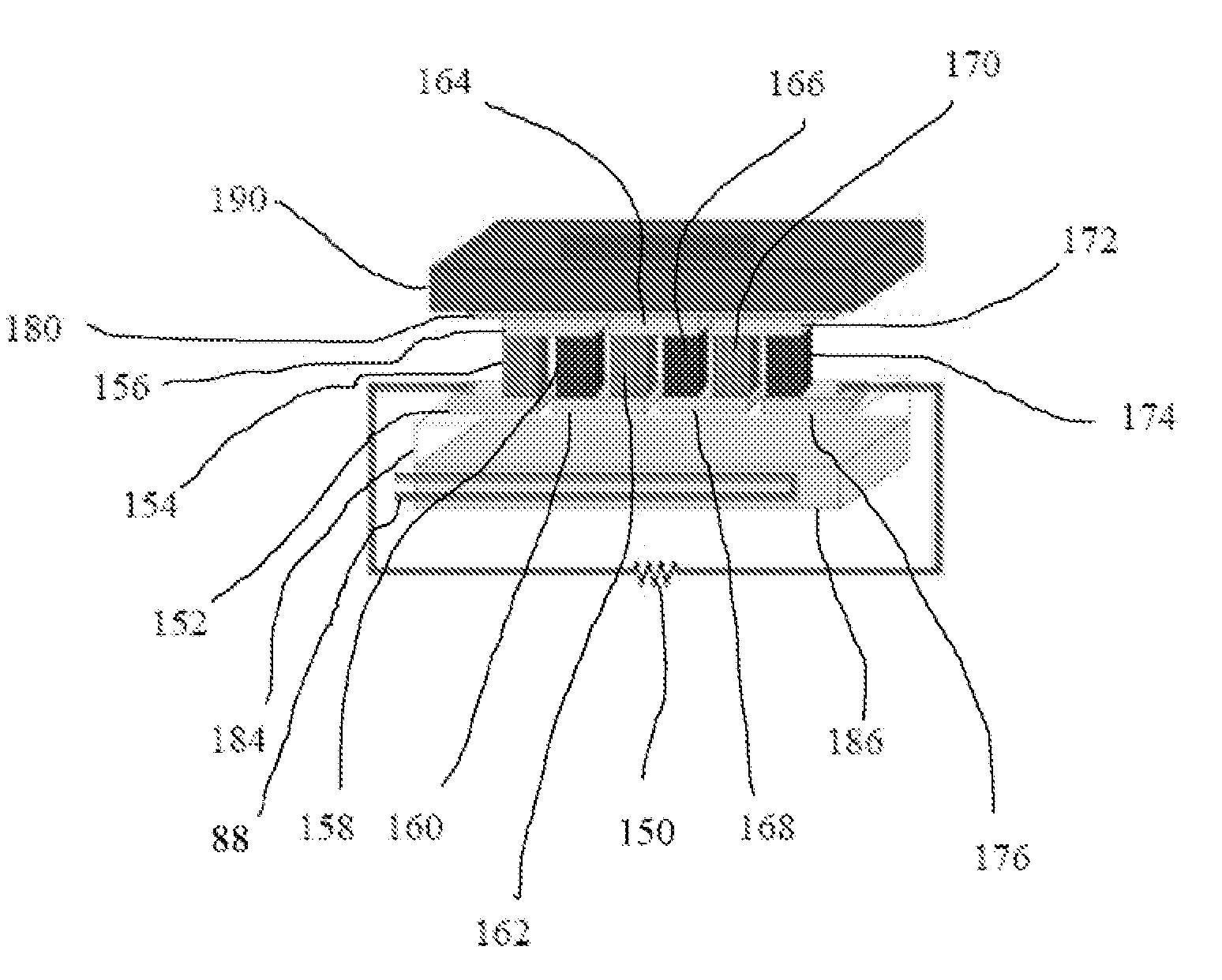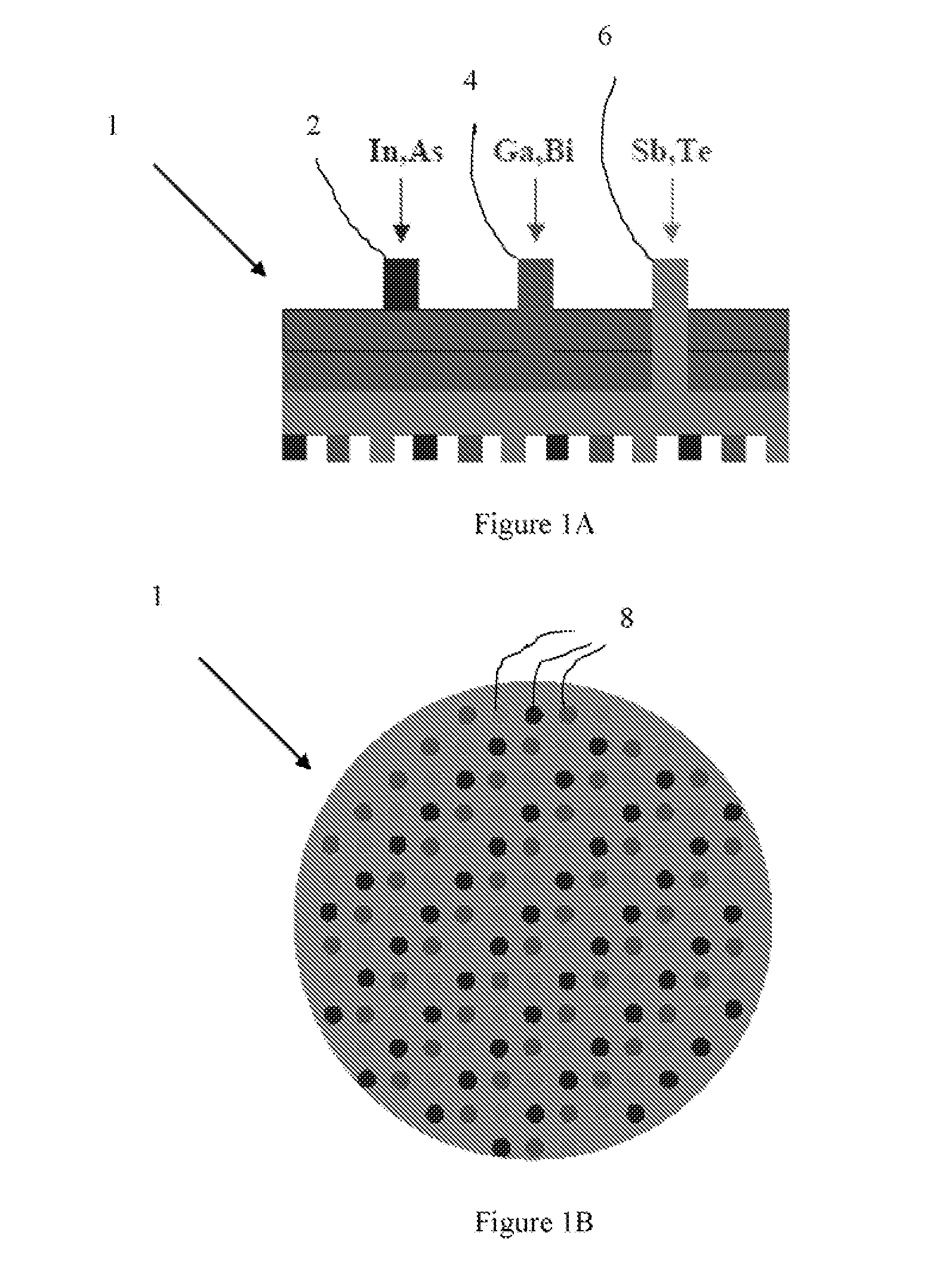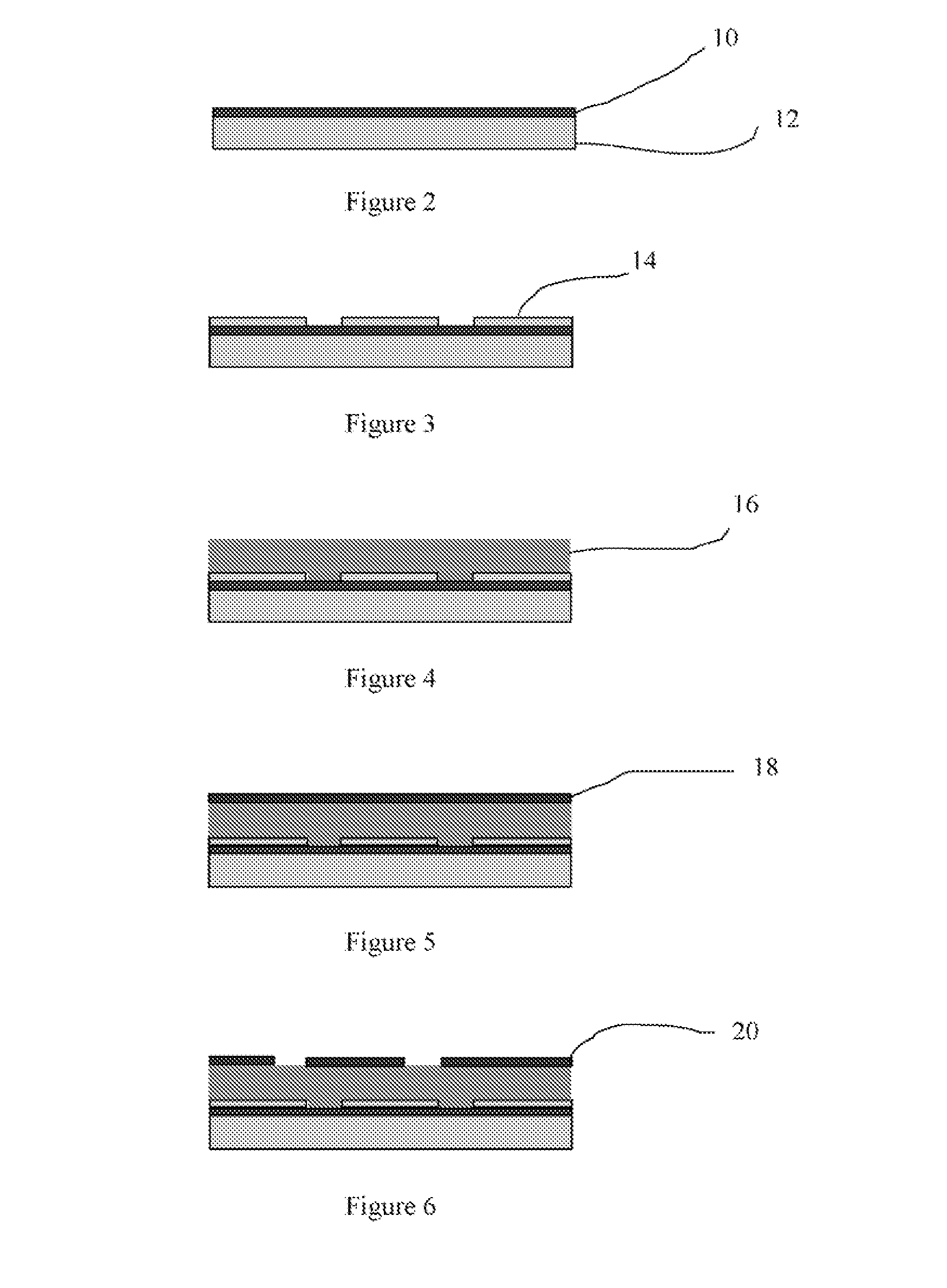Thermoelectric nanowire composites
a technology of thermoelectric nanowires and composite devices, which is applied in the manufacture/treatment of thermoelectric devices, thermoelectric devices with peltier/seeback effects, electrical apparatus, etc., to achieve the effects of high thermal management efficiency, significant power reduction, and high reliability
- Summary
- Abstract
- Description
- Claims
- Application Information
AI Technical Summary
Benefits of technology
Problems solved by technology
Method used
Image
Examples
Embodiment Construction
[0061]Embodiments of the present invention include an MOCVD deposition process to synthesize and dope nanowires as well as to form their composite films. The deposition steps of this process are compatible with traditional microfabrication process steps. The metal organic chemicals used as precursors for the MOCVD process to form p- and n-type nanowire arrays and p- and n-type thermoelectric films can chosen to be less toxic and much safer than conventional triethyl- and trimethyl-precursors.
[0062]The MOCVD process provides aligned p- and n-type nanowire arrays which are then filled with p- and n-type thermoelectric films to form the respective p-leg and n-leg of a thermoelectric device. The thermoelectric nanowire synthesis process is integrated with a photolithographic microfabrication process. The locations of the p- and n-type nanowire micro arrays are defined by photolithography. Metal contact pads at the bottom and top of these nanowire arrays which link the p- and n-type nano...
PUM
| Property | Measurement | Unit |
|---|---|---|
| diameter | aaaaa | aaaaa |
| width | aaaaa | aaaaa |
| wt % | aaaaa | aaaaa |
Abstract
Description
Claims
Application Information
 Login to View More
Login to View More - R&D
- Intellectual Property
- Life Sciences
- Materials
- Tech Scout
- Unparalleled Data Quality
- Higher Quality Content
- 60% Fewer Hallucinations
Browse by: Latest US Patents, China's latest patents, Technical Efficacy Thesaurus, Application Domain, Technology Topic, Popular Technical Reports.
© 2025 PatSnap. All rights reserved.Legal|Privacy policy|Modern Slavery Act Transparency Statement|Sitemap|About US| Contact US: help@patsnap.com



